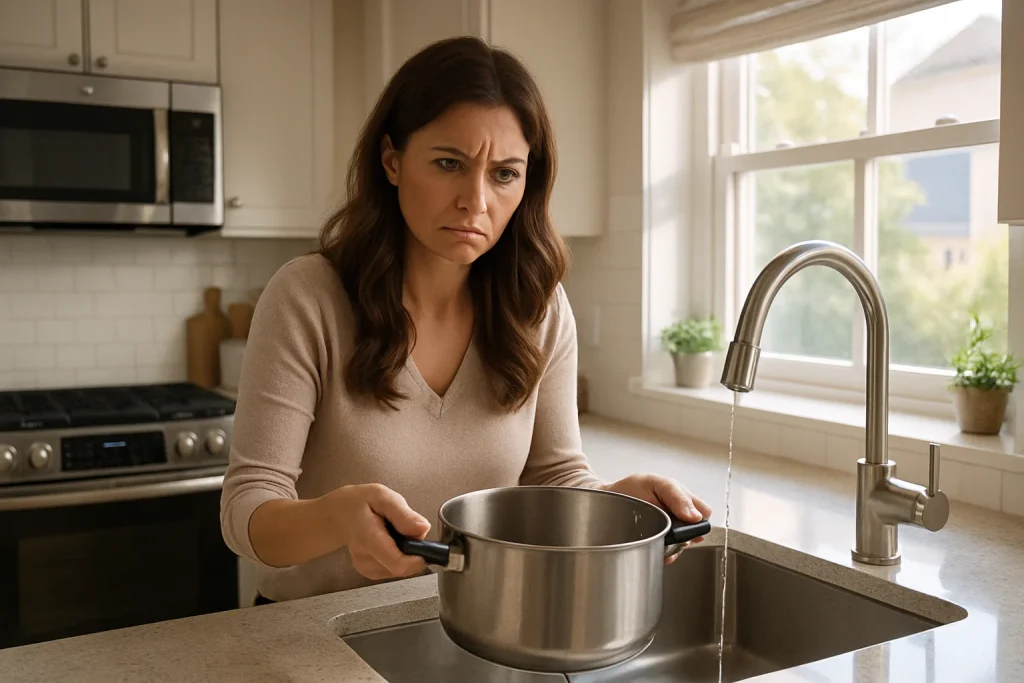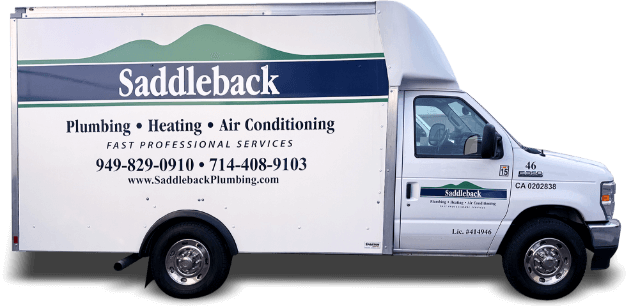If turning on your shower feels more like a gentle drizzle than a powerful rinse, or your kitchen sink struggles to keep up when washing dishes, you’re not alone. Low water pressure is one of the most common plumbing complaints we hear from homeowners. And while it’s frustrating, the good news is that the causes are usually fixable with the right diagnosis.
We specialize in tracking down the source of low water pressure and delivering lasting solutions. Below, we break down the most common causes and provide a handy homeowner checklist to help you troubleshoot before calling in the pros.

Common Causes of Low Water Pressure
1. Clogged Faucet Aerators or Showerheads
Mineral deposits from hard water can build up inside faucet aerators or showerheads, restricting water flow over time. This is especially common in areas with naturally hard water—something Saddleback residents are familiar with.
What to do: Unscrew the aerator or showerhead, soak it in vinegar to dissolve buildup, and rinse thoroughly. If the pressure returns, you’ve found your fix!
2. Faulty or Misadjusted Pressure Regulator
Many homes are equipped with a pressure regulator that manages the water pressure coming from the main supply line. If this device fails or is set too low, you’ll notice a drop in water pressure throughout the house. Warning signs:
- Sudden pressure drop in all fixtures
- Pressure surges or fluctuations
- Regulator is 10–15 years old or more
Our team can test and adjust your pressure regulator—or replace it if needed—to restore proper flow.
3. Leaks in the Plumbing System
Even a small hidden leak can lead to noticeable drops in water pressure. Water escaping from the pipes before it reaches your faucets means there’s simply less to go around. Signs of a hidden leak:
- Higher-than-normal water bills
- Wet spots on walls, ceilings, or floors
- Sounds of water running when no fixtures are on
We use advanced leak detection tools to pinpoint the problem without tearing up your home.
4. Pipe Corrosion or Buildup
Older homes with galvanized steel or aging copper pipes are particularly prone to internal corrosion or mineral scaling. This restricts flow and can gradually lower pressure in certain fixtures or throughout the home. If your home is more than 30 years old, it may be time to evaluate the state of your pipes.
Your Quick Homeowner Checklist for Low Water Pressure
Before you call us, here’s a quick checklist to help you assess the situation:
- Is the low pressure happening in just one fixture or throughout the house? One fixture may mean a clogged aerator. Whole-house issues point to a bigger problem.
- Is it affecting hot water, cold water, or both? Only hot water? It could be an issue with your water heater. Both hot and cold? Check the pressure regulator or for potential leaks.
- Do your neighbors have the same problem? If so, it might be a municipal supply issue. Call your water provider first.
- Have you checked for visible leaks around your property? Puddles or wet spots can signal a hidden leak that’s affecting pressure.
- How old is your home’s plumbing? Older pipes may need professional inspection for corrosion or buildup.
Contact Saddleback Plumbing Heating & Air for fast, professional plumbing repair. We have served Orange County since 1981.











